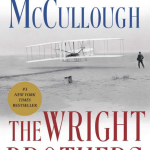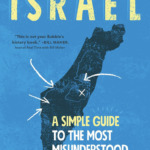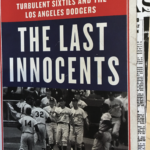The Guns At Last Light – The War In Western Europe by Rick Atkinson
 The Guns At Last Light – The War In Western Europe by Rick Atkinson – This is the final book of a trilogy about the war in Western Europe. It begins with the plans for the Normandy invasion and concludes with the German surrender and the death of Hitler. For those of us who grew up in the post WWII years and have a certain attraction to the many great books that have detailed this war, this series stands to be the most comprehensive, complete and I would imagine the most accurate of the great books written on this subject .While I have not read the first two of this series, I base my opinion on the fact that Atkinson draws upon all the previous works as well as extensive quotes from the diaries and writings of the participants from Churchill, Eisenhower, Montgomery, De Gaulle etc., their aides, their wives, their letters as well as the reporters of the times such Severid, Murrow, Hemmingway, Pyle etc. He also includes the writings from the diaries and letters of the GIs who fought the war including many heart wrenching letters from soldiers who were subsequently killed in action. Needless to say he draws insights from both sides of the conflict. The book covers the big picture as well as the human view from the foxhole. You could easily say that the book was over detailed but on the other hand it didn’t seem to miss anything. Each chapter has a small map of where things stood at a particular time but it was really difficult to read and appreciate. On the other hand being able to follow the narrative clearly would require a large wall map in color on your wall that would change with every few pages. (In the future electronic books, i pads and computer readers should have a tab which one could go back and forth and see a full screen map with flashing or moving graphics.) The book captures the drama and the tension of planning and executing the crossing of the British Channel. Although we may have previously read about it or seen films about this subject, it is still almost impossible to fully appreciate the logistical miracle of carrying it out as well as the terrible loss of life, injury and emotional trauma that these hundreds of thousands of soldiers experienced. It is equally difficult to realize that the survivors and hundreds of thousands of new soldiers were to go through the horrific experience of the Battle of the Bulge and the painful march through Germany, crossing the Rhine and ultimate destruction of the German military. Imagine landing crafts filled with soldiers being destroyed before they reached the shore, gliders laden with troops being shot out of the sky or crashing into the ground. There are all sorts of horrendous descriptions of Sherman Tanks or German Panzer Tanks either bringing about tremendous destruction or being blown up themselves with their occupants going up in flames. The narrative while seemingly tracing every painful kilometer across France and Germany switches back and forth from the battle line to various command centers behind the lines where Eisenhower, Montgomery, Patten and lesser but well known names are interacting in person or through messages sent back and forth. We get insight into the personalities, of our leaders as well as conflicts with each other. We can appreciate their brilliance as well as their mistakes. Every decision that they would make, when to advance, when to pull back, which side to move, who would cover which flank, when to bomb etc. would invariably cost hundreds if not thousands of casualties or fatalities of their troops. Sometimes there would be “fratricide” where errors were made of bombarding our own troops. There is even material showing what was going on in the German headquarters with some insight into their personalities. Although no new ground was broken in understanding the mindset that brought about the concentration camps, the discovery of them, the horror that was seen and the allied reaction to it is all there. The epilogue which sums up the massive cost of this war in a wide range of parameters from the 56 million hand grenades used, to battlefield causalities of the Americans since D-Day which exceeded ¾ million of whom at least 165,000 were dead, plus 62,000 air casualties – half of them dead. British, Canadian, Polish and ancillary forces tallied combat losses of 194,000 including 42,000 killed. Of all German boys born between 1915 and 1924 1/3 were dead or missing. Some 14 percent of the Soviet population of 190 million perished during the war. After the war, the digging up of American bodies from German soil so no soldier was left behind is another story which is briefly chronicled and will pull on the emotions of the reader along with so many other episodes in this piece of world history. Throughout the 878 pages (one quarter of which is notes and references) I would periodically ask myself why I was so drawn to still another account of this Great War, however well written and complete it might be? For some it might be to fully appreciate the war of their fathers, grandparents or great grandparents, which is certainly part of the reason for me (although only my uncles were in this great war). However, I have come to understand for me and perhaps for others young and old, this book allows me to identify with these brave people as I try to answer the an unanswerable question. How would I have dealt with being a soldier and participating in the “Guns of Last Light?”
The Guns At Last Light – The War In Western Europe by Rick Atkinson – This is the final book of a trilogy about the war in Western Europe. It begins with the plans for the Normandy invasion and concludes with the German surrender and the death of Hitler. For those of us who grew up in the post WWII years and have a certain attraction to the many great books that have detailed this war, this series stands to be the most comprehensive, complete and I would imagine the most accurate of the great books written on this subject .While I have not read the first two of this series, I base my opinion on the fact that Atkinson draws upon all the previous works as well as extensive quotes from the diaries and writings of the participants from Churchill, Eisenhower, Montgomery, De Gaulle etc., their aides, their wives, their letters as well as the reporters of the times such Severid, Murrow, Hemmingway, Pyle etc. He also includes the writings from the diaries and letters of the GIs who fought the war including many heart wrenching letters from soldiers who were subsequently killed in action. Needless to say he draws insights from both sides of the conflict. The book covers the big picture as well as the human view from the foxhole. You could easily say that the book was over detailed but on the other hand it didn’t seem to miss anything. Each chapter has a small map of where things stood at a particular time but it was really difficult to read and appreciate. On the other hand being able to follow the narrative clearly would require a large wall map in color on your wall that would change with every few pages. (In the future electronic books, i pads and computer readers should have a tab which one could go back and forth and see a full screen map with flashing or moving graphics.) The book captures the drama and the tension of planning and executing the crossing of the British Channel. Although we may have previously read about it or seen films about this subject, it is still almost impossible to fully appreciate the logistical miracle of carrying it out as well as the terrible loss of life, injury and emotional trauma that these hundreds of thousands of soldiers experienced. It is equally difficult to realize that the survivors and hundreds of thousands of new soldiers were to go through the horrific experience of the Battle of the Bulge and the painful march through Germany, crossing the Rhine and ultimate destruction of the German military. Imagine landing crafts filled with soldiers being destroyed before they reached the shore, gliders laden with troops being shot out of the sky or crashing into the ground. There are all sorts of horrendous descriptions of Sherman Tanks or German Panzer Tanks either bringing about tremendous destruction or being blown up themselves with their occupants going up in flames. The narrative while seemingly tracing every painful kilometer across France and Germany switches back and forth from the battle line to various command centers behind the lines where Eisenhower, Montgomery, Patten and lesser but well known names are interacting in person or through messages sent back and forth. We get insight into the personalities, of our leaders as well as conflicts with each other. We can appreciate their brilliance as well as their mistakes. Every decision that they would make, when to advance, when to pull back, which side to move, who would cover which flank, when to bomb etc. would invariably cost hundreds if not thousands of casualties or fatalities of their troops. Sometimes there would be “fratricide” where errors were made of bombarding our own troops. There is even material showing what was going on in the German headquarters with some insight into their personalities. Although no new ground was broken in understanding the mindset that brought about the concentration camps, the discovery of them, the horror that was seen and the allied reaction to it is all there. The epilogue which sums up the massive cost of this war in a wide range of parameters from the 56 million hand grenades used, to battlefield causalities of the Americans since D-Day which exceeded ¾ million of whom at least 165,000 were dead, plus 62,000 air casualties – half of them dead. British, Canadian, Polish and ancillary forces tallied combat losses of 194,000 including 42,000 killed. Of all German boys born between 1915 and 1924 1/3 were dead or missing. Some 14 percent of the Soviet population of 190 million perished during the war. After the war, the digging up of American bodies from German soil so no soldier was left behind is another story which is briefly chronicled and will pull on the emotions of the reader along with so many other episodes in this piece of world history. Throughout the 878 pages (one quarter of which is notes and references) I would periodically ask myself why I was so drawn to still another account of this Great War, however well written and complete it might be? For some it might be to fully appreciate the war of their fathers, grandparents or great grandparents, which is certainly part of the reason for me (although only my uncles were in this great war). However, I have come to understand for me and perhaps for others young and old, this book allows me to identify with these brave people as I try to answer the an unanswerable question. How would I have dealt with being a soldier and participating in the “Guns of Last Light?”













